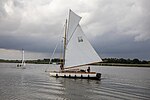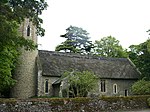Stubb Drainage Windmill
Grade II listed buildings in NorfolkGrade II listed windmillsHickling, NorfolkInfrastructure completed in 1825Norfolk building and structure stubs ... and 5 more
Norfolk geography stubsTower mills in the United KingdomTowers completed in 1825Use British English from September 2013Windmills in Norfolk

Stubb Drainage Windmill is 1.9 miles east of Hickling in the English county of Norfolk. The Windmill is a Grade II listed building and was given this status on 30 September 1987. The estimate is that there were once about 200 wind powered drainage windmills in the Broadlands. Stubb Drainage windmill is listed as one that is at risk of decay by Norfolk County Council.
Excerpt from the Wikipedia article Stubb Drainage Windmill (License: CC BY-SA 3.0, Authors, Images).Stubb Drainage Windmill
Stubb Mill Lane, North Norfolk Hickling
Geographical coordinates (GPS) Address Nearby Places Show on map
Geographical coordinates (GPS)
| Latitude | Longitude |
|---|---|
| N 52.740681 ° | E 1.611467 ° |
Address
Stubb Mill
Stubb Mill Lane
NR12 0BP North Norfolk, Hickling
England, United Kingdom
Open on Google Maps









